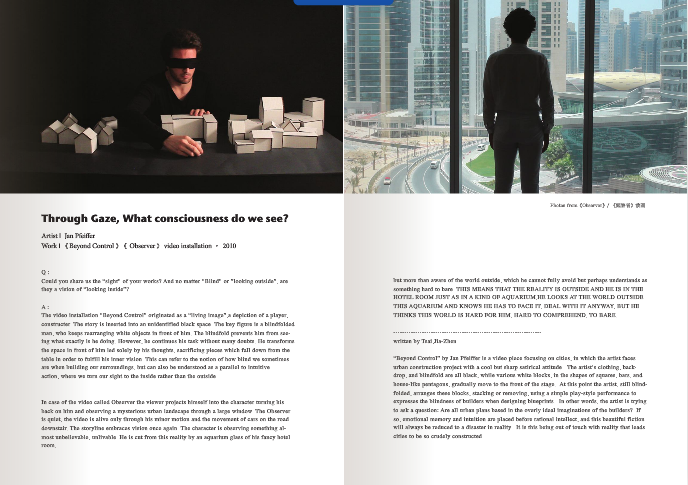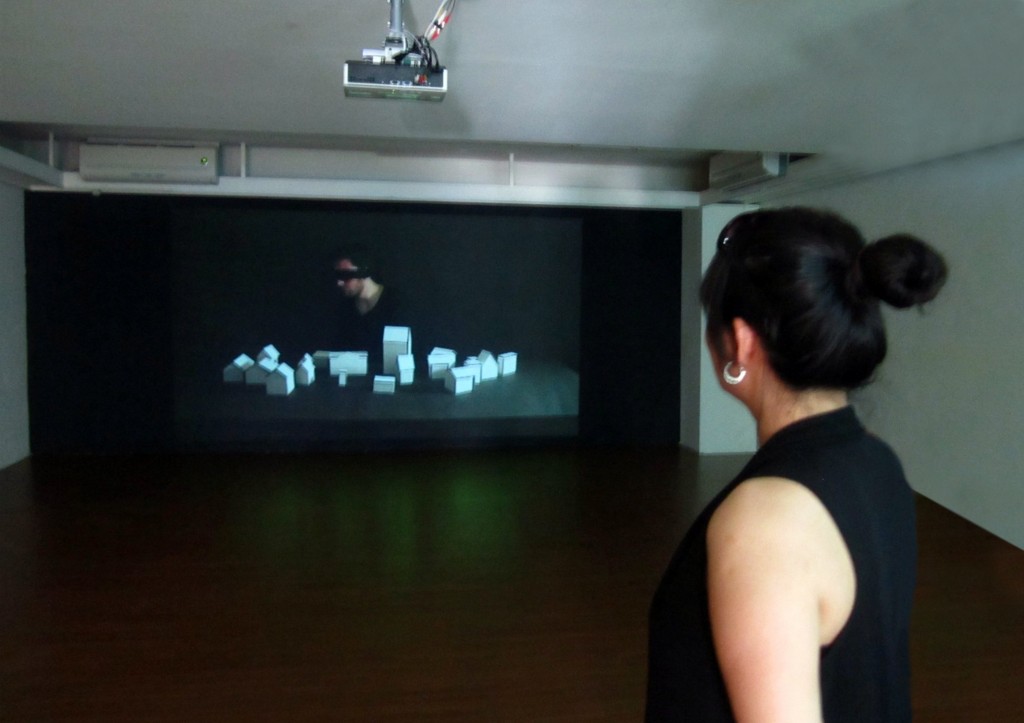.
,
.
.
“They have eyes so as not to see”, Jacques Lacon, cited from the Christ. To gaze is rather to see than to look; that is, to see the subject-object relations between physical image and its psychological projection, or between a person’s desire and the reality she/he confronts. From the structural point of view, gazing is an act of imagining and representation-resisting that inhabits in a relative position to the reality. Therefore, it does not necessary for a person who gazes to visualize, represent or perceive what she/he gazes upon sensorily. What we get from this person is the reflection of her/his gazing, not the gazed. In other words, gaze produces a mirror image of its subject based on the imagination of the viewer (via “I am looking at her/ him”) and the objectivity of the viewed (via “She/He is looking at me”). Eventually, this dialectical interaction happens primarily on the viewer which reflects a reality of “I see she/he is looking at me”. In Catrine Val’s self dress-up artworks, the messages disclosed are not only about the object of being desired and watched, but also the process of changing the self into the other in order to reflect the reality of the self though the construction of femininity; that is, to see the self via the other. While in Jan Pffier’s “Beyond Control”, the blindfolded man significantly manifestos the ridiculousness between imagination and the construction of viewing, although the artist may try to indicate some kind of social reality. Unlike Katrina and Jan reversing their own images as a media to observe the object, in Ohad Milstein’s “Girl in White”, the photographer acted as a demanding and even bossy subject to make the girl disturbed within 7 minutes and then to take the close- up of her face. This work not only expresses the tension between subject and object, but to some extent also implies the structure of gender and the role of gazing and the gazed. By interweaving the memories into the pupils, Cheng Meng-Meng’s “Black Eyes” and Hung Yun-Ting’s “When We Are Together” are more to emphasize on the imaginary part in gaze than to recall. For Hung Yun-Ting’s artwork in combination of animation and telescope, she tries to connect the viewer’s body, exhibition venue and art all together, in order that the audience can be initialized to imagine their own “selves” through watching or being involved in the artwork as “I am gazing upon the universe, an ideal distant shore that doesn’t exist in reality”.
http://www.yrjmoca.org.tw/web/news/news_Detail.asp?show=1&no=53

